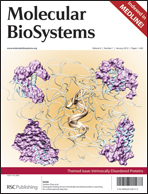Henipaviruses are recently emerged severe human pathogens within the Paramyxoviridae family. Their genome is encapsidated by the nucleoprotein (N) within a helical nucleocapsid that recruits the polymerase complex via the phosphoprotein (P). We have previously shown that in Henipaviruses the N protein possesses an intrinsically disordered C-terminal domain, NTAIL, which undergoes α-helical induced folding in the presence of the C-terminal domain (PXD) of the P protein. Using computational approaches, we previously identified within NTAIL four putative molecular recognition elements (MoREs) with different structural propensities, and proposed a structural model for the NTAIL–PXD complex where the MoRE encompassing residues 473–493 adopt an α-helical conformation at the PXD surface. In this work, for each NTAIL protein, we designed four deletion constructs bearing different combinations of the predicted MoREs. Following purification of the NTAIL truncated proteins from the soluble fraction of E. coli, we characterized them in terms of their conformational, spectroscopic and binding properties. These studies provided direct experimental evidence for the structural state of the four predicted MoREs, and showed that two of them have clear α-helical propensities, with the one spanning residues 473–493 being strictly required for binding to PXD. We also showed that Henipavirus NTAIL and PXD form heterologous complexes, indicating that the PXD binding regions are functionally interchangeable between the two viruses. By combining spectroscopic and conformational analyses, we showed that the content in regular secondary structure is not a major determinant of protein compaction.

You have access to this article
 Please wait while we load your content...
Something went wrong. Try again?
Please wait while we load your content...
Something went wrong. Try again?


 Please wait while we load your content...
Please wait while we load your content...